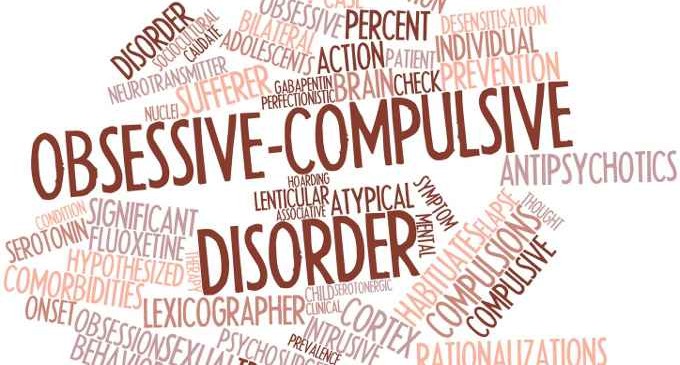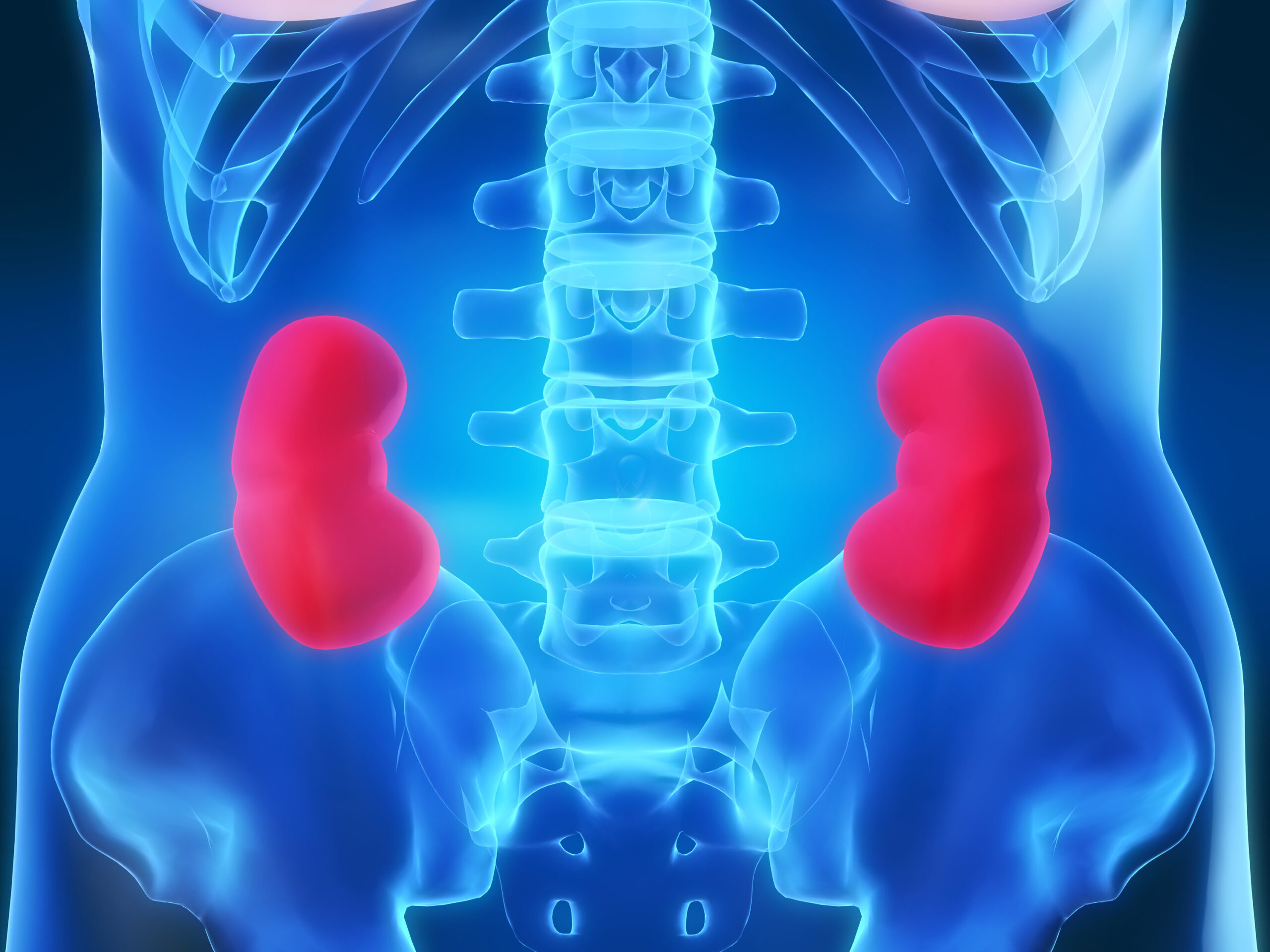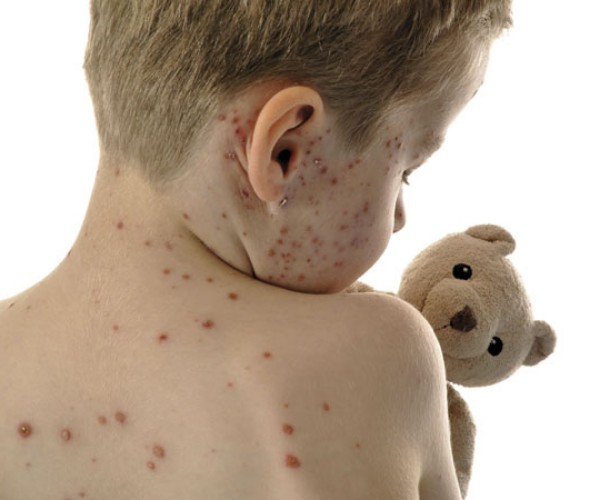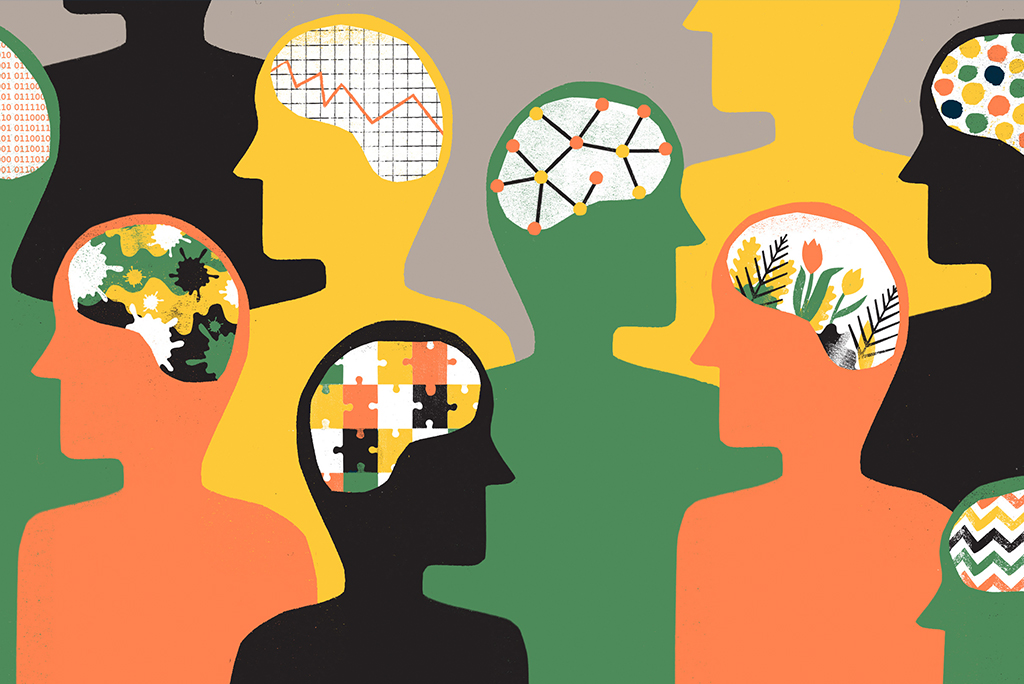Couple infertility: what it is, how prevalent it is, how it manifests and how to prevent it
![]() Infertility has been recognized as a disease involving two patients at the same time, namely the members of the affected couple. It is defined as the inability to conceive and/or carry a pregnancy to term after at least 12 to 24 months in the absence of contraception.
Infertility has been recognized as a disease involving two patients at the same time, namely the members of the affected couple. It is defined as the inability to conceive and/or carry a pregnancy to term after at least 12 to 24 months in the absence of contraception.
It currently involves about 15% of Italian couples of childbearing age.
Statistics report the following distribution of causes: unexplained or idiopathic infertility (25%); ovulatory disorders (25%); tubal damage (15%); male factor (25%); uterine or peritoneal abnormalities (10%).
It may be asymptomatic or associated with nonspecific symptoms, that is, symptoms that are not necessarily indicative of infertility such as:
- For women: more or less intense vulvo-vaginal discomfort (itching, burning, pain during intercourse, atypical vaginal discharge) or pelvic discomfort (perimenstrual and/or periovulatory pain, pain during intercourse), irregularity of menstrual cycle.
- For men: manifestations in the external genitalia (redness, itching, burning), inguinal or scrotal pain, urinary urgency, testicular swelling or hematoma, feeling of weight at the scrotum.
Reproductive function subsists in the presence of a balanced interaction between psychic, neurological, hormonal, metabolic, immune, environmental and social factors as well as anatomical factors.
Therefore, infertility, in addition to being caused by organic causes directly affecting the genital organs, can also arise as a result of an imbalance in the balance between the systems involved.
In order to adequately practice prevention, it is very important, in the presence of symptoms among those described, to perform specialized checkups and always take care of lifestyle, the main areas of which are nutrition, physical activity, stress management and pollution.
Unexplained or idiopathic infertility is when the couple presents all tests and framing evaluations in the normal range, despite failing to conceive.
That is, these are conditions in which medicine cannot identify the triggers.
Many of these cases, can actually be traced back to environmental, dietary, occupational (such as exposure to toxic agents), as well as related to physical activity/sedentary, smoking-drugs-alcohol use, and improper control of stress and circadian rhythm.
In state-of-the-art reproductive medicine centers, there is an interdisciplinary team of specialists who are often able to treat infertility by working on lifestyle correction.
Dialogues between psyche and biological systems. How stress alters fertility potential
![]()
Stress, has been shown to inhibit the fertility axis, which in medicine is called the hypothalamic-pituitary-gonadal axis.
It represents a complex system of functional interconnection that starts from anatomical structures in the brain. Here, signals from the outside, that is, from the surroundings, and from the inside, that is, from the organism, are processed and compared, and from here responses are generated that result in messages for the functioning of the sex glands.
The inhibiting impact by stress on this axis is expressed in male and female symptoms such as erectile dysfunction, premature ejaculation, ovulatory disorders, and decreased libido.
In addition, in the partner, high and prolonged circulating levels of stress hormones such as cortisol can interfere with the lutein hormone phase, which begins after ovulation with the task of sustaining pregnancy from the first days.
This may lead to subsequent difficulty in implanting the embryo and/or maintaining gestation (effects on abortivity).
In any case, when stress becomes chronic, that is, persists for a long time, it is associated with a steady increase in its chemical mediators leading to disease.
Fortunately, these phenomena can be contained through psychological techniques, Eastern disciplines such as acupuncture, a proper diet and the right physical activity.
The diagnosis of infertility can also generate or exacerbate stress.
In fact, once the failure of natural procreation has occurred, couples fall into a spiral of guilt (related to the emergence of loss of virile and fertilizing power, for the male, and of motherhood power, for the female) and shame (related to a sense of abnormality, due to the impossibility of giving their partner(s) the desired child and their parents the long-awaited grandchildren, etc.) that invades their emotional, relational and working lives.
Taking into account that sex hormones, in addition to controlling sexual and reproductive behavior, are also involved in the regulation of immunity and the central and peripheral nervous system, it explains why even a PMA intervention can fail if unconscious conflict persists. In fact, if a problem at the fertilization level can be bypassed with this technique, the conflicting emotions of the individual partner or the couple will continue to be expressed, affecting the rooting and evolution of the pregnancy.
In this sense, only knowledge, mental processing of the conflict, and increased awareness of the infertile couple can contribute to the success of PMA.
For these reasons, the most suitable and effective care that a reproductive medicine center can offer is an integrated intervention between medical specialists and psychosexual counselors in the field.
Lifestyle care
![]()
Medicine has reevaluated the impact of lifestyle on overall health and thus on reproductive health to the point of giving space to a branch dedicated to this area, which as we have mentioned, spans several fields of action: stress management, nutrition, alcohol and/or drug use, physical activity, and environmental impact. By now, reproductive specialists to assess the fertility potential of patients investigate where they live (pollutants) about their relationship with food, sleep, note any use of drugs, alcohol, smoking, ask whether they exercise and whether they deal with stressful situations on a daily basis or have a particularly traumatic experience.
Often a lifestyle intervention (such as nutrition education or a sexological course) can increase the chances of conception even without resorting to PMA therapies or techniques.
The right nutrition. It is well known that the diet to be followed should include first courses of whole grains, oily fish, legumes and leafy vegetables, and fresh seasonal fruits, but without overdoing the overly sugary ones.
Excessive consumption of red meat, cold cuts and sausages should be avoided instead, both because of their saturated fat content and because of the risk (for those who are not protected) of toxoplasmosis.
There are specific nutritional regimens to be suggested in certain pathological conditions such as endometriosis, celiac disease, and other conditions associated with immune system dysregulation, polyabortion, and recurrent infections of the male and female uro-genital systems.
These are generally balanced diets with an anti-inflammatory effect and regulation of intestinal activity and the body’s physiological defenses.
These are personalized nutritional choices that should be prescribed by experts.
Therefore, the figure of the nutritionist, is also fundamental in the prevention and treatment of couple infertility and an integral part of the center’s interdisciplinary care.
Effects of obesity and excessive thinness. A number of processes take place in adipose tissue that produce substances (such as estrogen adrogens, leptin) that participate in the balance of the fertility axis.
When fat representation is altered, either in excess or in deficiency, the blood levels of these substances are altered, leading to disturbances in the mechanisms of ovulation and spermatogenesis.
Therefore, there is an ideal balance between weight and height for each individual, the ratio of which is called BMI (body mass index), which falling within normal values helps control overall health and fertility.
Recent epidemiological data released by the National Institute of Health confirm that obesity and excessive thinness both cause 6 percent of primary infertility and, consequently, 12 percent of total infertility.
Physical activity. The scientific literature shows that non-excessive physical activity or daily brisk walking is statistically significantly associated with a better spermiogram picture and better quantity and quality of vulations.
At excessive levels, especially when accompanied by significant caloric reduction, exercise can cause transient suppression of reproductive function in both men and women by inhibiting the hypothalamic-pituitary-gonadal axis.
Drug use alcohol and smoking. Drugs smoking and excessive alcohol use reduce fertile potential in men and women.
In addition to interfering with the function of the fertility axis, they participate in generating oxidative stress.
That is, they contribute to breaking the balance between defense substances (antioxidants) and oxidizing chemicals that are an insult to cells.
When excessive oxidants occur in the testicular and/or ovarian-tubular microenvironment, oxidative stress participates in the causes of infertility
Pollution. Pollutantsgenerate oxidative stress as well.
Many of them, bind to hormone receptors acting as “endocrine disruptors” i.e., generating altered hormone function. In addition, in some fertility disorders, such as endometriosis, due to a genetic predisposition some pollutants are degraded more slowly aggravating the disease.
Some examples are dioxin (which is among industrial chemical and agricultural products), phthalates (chemical compounds used in the plastics industry), perfluoctane sulfonate (used in the manufacture of textiles, upholstery, leather, etc.) which has been found in high concentrations in women with endometriosis.
Also in humans, exposure to metals pesticides, insecticides leads to a decrease in sperm mobility and damage in their DNA.
What to do when the child does not come. Diagnosis
![]()
In the cases of young couples, there is no cause for premature alarm. The first question to ask is whether indeed sexual intercourse is at the right frequency at the woman’s fertile time (between the 11th and 15th days of the cycle when menstruation is regular).
So a certain amount of time must be set aside in which to consistently test nature.
This time depends mainly on the age of the partner: for younger women with male partners in good general health, it should be one to two years; between the ages of 35 and 39 it is reduced to at least 6 months.
After this time, or if the partner is older than 39 years, or again, if there is a known cause of infertility, a referral to a reproductive medicine center should be made to begin the necessary investigations.
It is very important that specialized centers are used, as knowledge about human fertility is now so extensive that it is a superspecialty field.
The most effective and innovative approach is interdisciplinary care by a team of specialists who can interact constantly on clinical cases and accompany the couple throughout their journey in the center, from access to the achievement of the goal, which must be not only pregnancy but, where possible, the restoration of the ability to procreate.
At the first meeting, all possible sexological and medical information is gathered from both partners.
Immediately afterward, the couple undergoes a fertility potential framing, which is a set of tests useful in understanding why pregnancy has not occurred, whether there is something to work on with regard to lifestyle, or something to treat.
Through blood samples from both members of the couple, all factors related to fertility are investigated: hormonal, genetic, and immunological.
A series of pelvic ultrasound scans, swabs in the cervix and vagina to look for infection, an ISG (hysterosalpingography) to know the status of the tubes, and where indicated endoscopic examinations, such as hysteroscopy, laparoscopy, to study the reproductive system with camera resolution are also performed for the woman.
For men, examinations are performed on the semen specimen(spermiogram, spermioculture and urethral swabs to look for infection) ultrasound and scrotal Doppler.
Once the causes have been identified, treatment is carried out. This is prescribed based on diagnostic findings and may consist of one or more of the following options: medical therapies (e.g., treatment of genital infections), surgery (e.g., on varicocele or ovarian cysts), lifestyle interventions.
In cases of long-term idiopathic infertility or if the identified cause of infertility cannot be cured, Medically Assisted Procreation may be used.
The most commonly used drugs
![]()
Lifestyle interventions, supplements, medical therapies and surgical therapies are used to treat fertility.
Widely used in both men and women are supplements and nutraceuticals.
These are preparations available in pharmacies, based on substances necessary for well-being, which in most cases are contained in foods.
Regardless of nutritional habits, it may happen that in particular conditions or diseases (allergies, gastro-intestinal changes) these substances are deficient, so they are administered in the form of nutraceuticals.
The most widely used in the field contain Glutathione, N-acetyl-cysteine, Vit.C, Vit,E, Coenzyme Q10, Carnitine, Myoinositol, folic ac, Lycopene, beta carotene, etc.
Vitamin D supplements, whose natural sources are limited, especially for vegetarians or people who do not like fish, are proving increasingly effective.
The drugs of greatest use and only by specialist prescription are gonadotropins.
These are drugs that mimic or are derived from human gonadotropins, hormones that in men and women, are produced by a gland in the brain, the pituitary gland, with the function of stimulating the testis and ovaries to produce sperm and oocytes.
These drugs can be used in cases where there are problems with ovulation or sperm production to facilitate these processes.
In addition, in all PMA procedures, they are administered to the partner in the preliminary stage called “ovarian stimulation” in order to produce more oocytes useful for fertilization, increasing the chances of success.
Over the years we have seen a continuous evolution in gonadotropin production to the point where we have a wide range of choices and increasingly advanced prepaparates.
What is PMA and what it consists of
![]()
PMA (Medically Assisted Procreation) refers to a set of medical procedures that are used to help the sperm meet the egg cell, or treat such cells, in order to increase the chances of conception.
Main procedures. They can be traced to two groups: that of in vivo fertilization and that of in vitro fertilization.
In vivo fertilization includes methods in which the encounter of the sperm with the egg cell occurs in the woman’s body, whereas in in vitro fertilization such an encounter is provoked in the laboratory.
To increase the likelihood of success, whenever possible the procedures are preceded by hormone stimulation therapy of the female partner in order to produce more egg cells useful for fertilization.
During this therapy, which lasts about 14 days, the partner undergoes cycle monitoring, which is a series of ultrasound scans and blood draws with hormone checks to follow the development of the follicles, which contain the egg cells.
The most common type of in vivo fertilization is Intrauterine Insemination (IUI). In such cases, the woman is monitored to identify the stage of maximum fertility.
That is the time when semen is prepared in the laboratory to be transferred to the uterus through tolerable and short-duration maneuvers that therefore do not require hospitalization. The other group is that of in vitro fertilization (IVF) methods, which represents the maximum help that medicine can bring to fertilization.
When the follicles are mature, that is, after about 14 days of ovarian stimulation, egg cells are harvested, vaginally under ultrasound guidance.
The recovered egg cells are then fertilized in the laboratory with spermatozoa.
After 3 to 5 days of culturing the embryos in the laboratory, they are transferred into the uterus through a thin catheter, that is, a soft tube, again vaginally.
About 12 days after transfer to the uterus, a pregnancy test is performed with a blood draw to check whether the embryos have taken root.
Success rates. The chances of pregnancy with PMA techniques vary greatly from case to case and essentially depend on 3 factors such as, the woman’s age, the causes, and the duration of infertility. However, for in vivo fertilization techniques, that is, intrauterine insemination, the chances range from 10 to 30 percent, while for in vitro fertilization techniques they range from about 15 to 60 percent.
Acupuncture and infertility
![]()
Infertility is a multifactorial condition, often sustained by hormonal, immune, metabolic, psychological, and environmental imbalances on which acupuncture can be therapeutic.
The needle stimulus, increases the release of substances that have precisely a hormonal and immune balancing action.
Some of the released biomolecules also have a modulating action on blood circulation and the neurovegetative system, that system of pathways that innervate the internal organs, regulating the body’s vital functions through nerve mechanisms independent of the control of the will.
The positive and now extensive experience of acupuncturists in the field of human infertility is based on these mechanisms of action.
There are several cases in which the benefits of acupuncture can be used.
In man:
- It improves motility and the percentage of normal sperm forms. Minor and controversial results are found on the number. The main effects were observed if asthenoteratospermia was associated with inflammation or varicocele;
- It reduces perceived stress.
In the woman:
- It improves the syndromic picture of micropolicystic ovary;
- It improves the clinical picture of endometriosis;
- It reduces the symptoms of Diffuse Pelvic Inflammation (PID);
- Reduces mid- to high FSH levels;
- Improves endometrial patterning;
- Contributes to the rebalancing of the immune system;
- Control pain during and after pick-up;
- It improves the outcome of embryo transfer;
- It reduces perceived stress.
Oral hygiene and infertility
![]()
Not everyone knows that tooth/gum hygiene and reproductive potential are closely related.
Poor oral health is statistically related to disorders and diseases that underlie, in many women and men, infertility.
The direct correlation has been highlighted in numerous researches and extensively investigated in the literature.
An Australian study published in 2011, found that women with periodontitis take longer on average to become pregnant, compared to women without the disease.
Further studies have shown how periodontal disease in men or women, can also invalidate attempts at IVF treatments.
Periodontitis (or periodontal disease) is an inflammation often related to the presence of specific bacteria, affecting the supporting tissues of the tooth, gums, periodontal ligament, and alveolar bone that surround and support the teeth, collectively called the periodontium.
If left untreated, it can lead to tooth loss.
Its symptoms (halitosis, gum bleeding, tooth mobility, tooth sensitivity) often, not recognized quickly, are overlooked until it is too late.
A serious consequence is the fact that chronic periodontitis can induce a release of toxins into the circulation, which can even reach the amniotic fluid and trigger (in addition to episodes of infertility) an inflammatory response that causes miscarriages and preterm deliveries.
But that’s still not all because the bacteria responsible for the disease can also adversely affect male fertility.
Individuals with periodontitis, are more likely to suffer from erectile dysfunction than those without gum disease.
There is also a statistical correlation with seminal quality






































































































